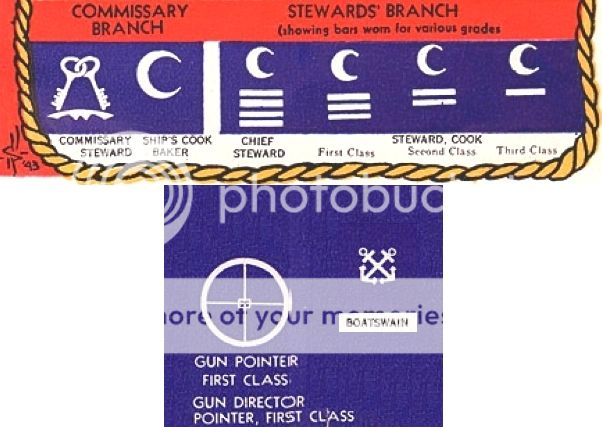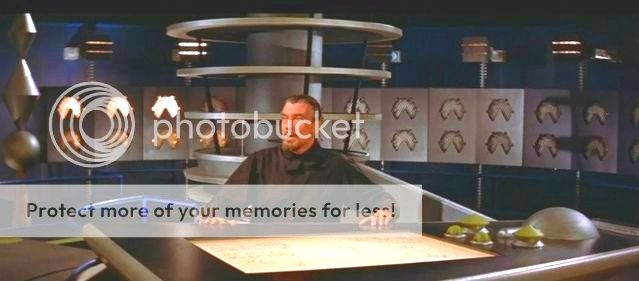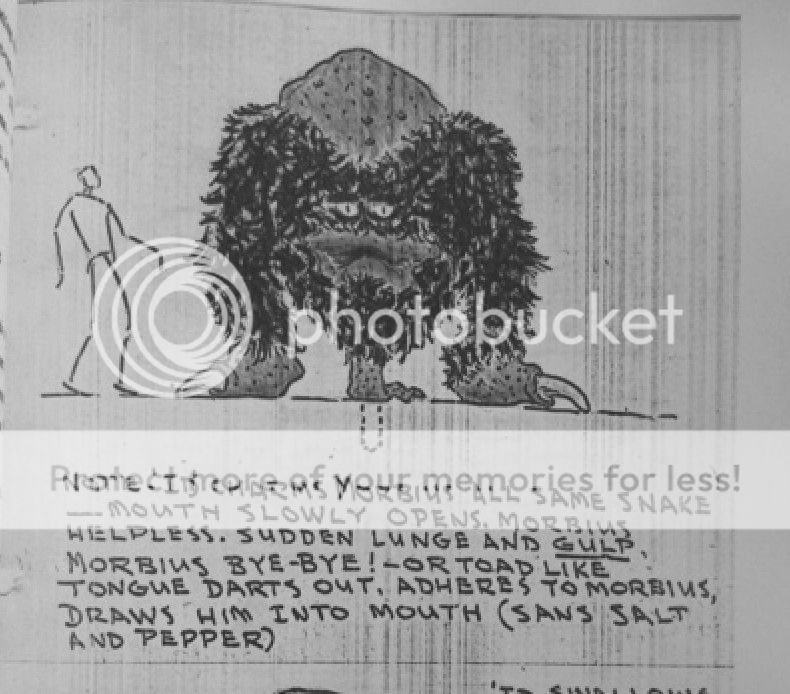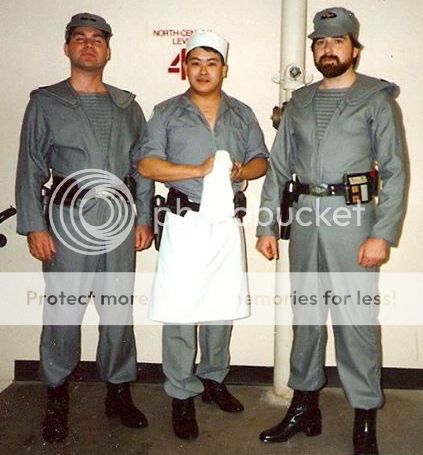A Further Clarification On The Ranks
Clandestiny was very close, but didn’t have the colors correct and did not have the advantage of Walt Plunkett’s notes.
Here is the color corrected version of the graphic:
Mr. Plunkett (an Oscar winner for
Gone With The Wind) listed the ranks this way:
United Planet Federal Services
Space Patrol and/or
Stellar Survey
Space Marshal
Admiral
Commodore
Captain
Commander
Lieutenant
Ensign
Midshipman
Master Chief Petty Officer
Chief Petty Officer
Petty Officer First Class
Petty Officer Second Class
Spaceman Able
Spaceman Apprentice
Spaceman Recruit
Space Rangers and/or
Hegemonic Guard
Sky Marshal
General
Colonel
Major
Captain
Lieutenant
Subaltern
(In the British Army subaltern was the junior rank in the cavalry.)
Cadet
Fleet Sergeant
Ship’s Sergeant
Sergeant
Corporal
Private First Class
Trained private
Recruit Private
It seems as if some of this was used — Commander, Lieutenant, etc. — in
Forbidden Planet and — Colonel, Major, Lieutenant — in
The Twilight Zone. It also seems that they may have inspired Robert A. Heinlein for
Starship Troopers — or it may be the other way around as they
were friends.
Clandestiny stated that he thought that “Chief Quinn” meant that he was a Warrant Officer. Not so. Mr. Plunkett didn’t list any warrant ranks.
In the United States military — which Mr. Plunkett would be most familiar with — the rank of warrant officer (grade W-1 to CW-5) is rated as an officer above the senior-most enlisted ranks, as well as officer cadets and candidates, but below the officer grade of O-1 (NATO: OF-1). Warrant officers are highly skilled, single-track specialty officers, and while the ranks are authorized by Congress, each branch of the uniformed services selects, manages, and utilizes warrant officers in slightly different ways. For appointment to warrant officer one (W-1), a warrant is approved by the secretary of the respective service. For chief warrant officer ranks (W-2 to W-5), warrant officers are commissioned by the President of the United States and take the same oath as regular commissioned officers (O-1 to O-10).
Warrant officers can and do occasionally command detachments, units, activities, vessels, aircraft, and armored vehicles as well as lead, coach, train, and counsel subordinates — but only when commissioned officers are unavailable. However, the warrant officer's primary task as a leader is to serve as a technical expert, providing valuable skills, guidance, and expertise to commanders and organizations in their particular field.
He also stated that “Bosun” (or "boatswain" or "bos'n") was not a rank at all. He’s both right and wrong. (There are two levels: boatswain and his junior, boatswain’s mate.)
The rank of boatswain was until recently the oldest rank in the Royal Navy, and its origins can be traced back to the year 1040. In that year, when five English ports began furnishing warships to King Edward the Confessor in exchange for certain privileges, they also furnished crews whose officers were the master, boatswain, carpenter and cook. Later these officers were "warranted" by the British Admiralty. They maintained and sailed the ships and were the standing officers of the navy.
The Royal Navy's last official boatswain, Commander E. W. Andrew, OBE, retired in 1990.
The boatswain works in a ship's deck department as the foreman of the deck crew. Sometimes, the boatswain is also a third or fourth mate on merchant vessels. A bosun must be highly skilled in all matters of marlinespike seamanship required for working on deck of a seagoing vessel. The bosun is distinguished from other able seamen by the supervisory roles: planning, scheduling, and assigning work.
As deck crew foreman, the boatswain plans the day's work and assigns tasks to the deck crew. As work is completed, the boatswain checks on completed work for compliance with approved operating procedures.
These are
job or what the Navy calls
ratings. For example a
Fireman in the navy may be as low as a Seaman Apprentice or may be as high as a Master Chief Petty Officer — which designates the
rank they hold.












